|
Crocuta crocuta
(Spotted hyaena)
gevlekte hiŽna [Afrikaans];
Flecken Hyšne, TŁpfelhyšne [German];
hyŤne tachetťe [French];
nyangao, fisi [Swahili];
impisi, ipisi enamabala [isiNdebele];
isandawane, impisi, ingcuka-cheya [isiXhosa];
impisi [isiZulu];
phiri [Sepedi];
phiri, phiri-thamaga, leholo, masonokwane [Setswana];
phiri, sentawana, leliritshwana [Sesotho];
bere [Shona]
impisi, imphisi [siSwati];
mhisi, xitsindziri [Xitsonga];
phele [Tshivenda];
sitongwani
[Lozi];
umpuru [Yei];
Gara ╪hiras [Nama] [Damara]
Life
>
Eukaryotes >
Opisthokonta >
Metazoa (animals) > Bilateria > Deuterostomia >
Chordata > Craniata > Vertebrata (vertebrates) >
Gnathostomata (jawed vertebrates) > Teleostomi (teleost
fish) > Osteichthyes (bony fish) > Class:
Sarcopterygii (lobe-finned fish) > Stegocephalia
(terrestrial vertebrates) > Reptiliomorpha > Amniota >
Synapsida (mammal-like reptiles) > Therapsida > Theriodontia
> Cynodontia > Mammalia (mammals)
> Placentalia (placental mammals) > Laurasiatheria
> Ferungulata > Ferae > Carnivora > Family: Hyaenidae (hyenas)
> Subfamily: Hyaeninae
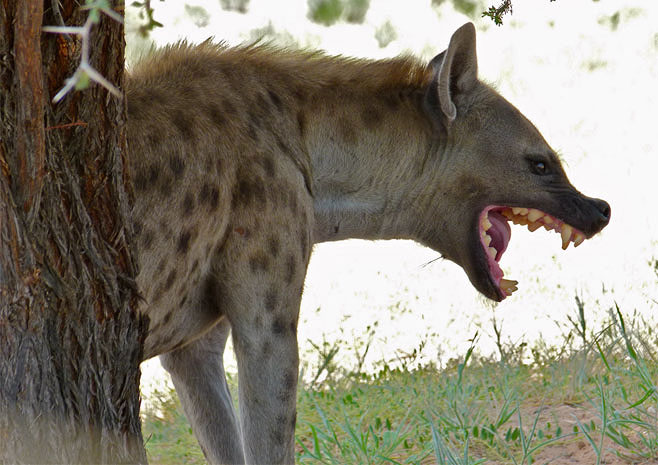 |
|
Spotted hyaena, Kgalagadi Transfontier Park, South
Africa. [photo
Bernard Dupont ©] |
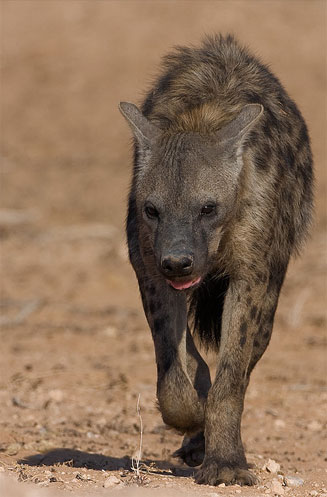 |
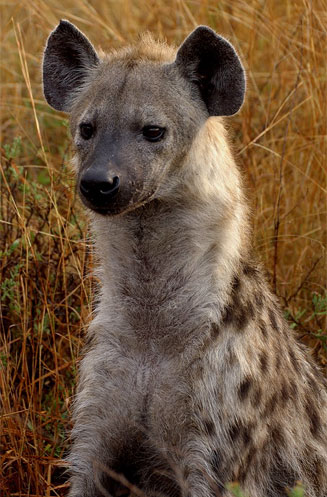 |
|
Spotted hyaena, Kgalagadi Transfrontier Park,
South Africa. [photo Gerhard Theron
©] |
Spotted hyaena, Kruger National Park, South
Africa. [photo Arno Meintjes
©] |
Identification
Spotted hyaenas have an unmistakable body
shape, with heavily build forequarters that stand significantly
higher than the lighter hindquarters. The head is large with rounded
ears and a black muzzle. It has a light brown to yellowish coat with
dark brown spots or blotches distributed over the body, only the
head, tail and chest are not spotted. A short erect mane is present
on the neck and shoulders. Always regarded as a cowardly scavenger,
spotted hyaena are now known to be efficient hunters. The powerful
jaw structure and large teeth ensure that the whole prey animal is
eaten including crushing the large bones to extract the marrow.
Hyena droppings are characteristically white because of the very
high bone content.
Size
Total Body Length: 120-180 cm; Height at
Shoulder 85 cm; weight range 60 - 80 kg.
Dental Formula
I C C P P M M =
34 =
34General behaviour
Hyaenas belong to one of the few mammals where
females are larger than males. The females are dominant to males in
the “clan”, and each clan is lead by a dominant matriarch. The size
of the clan is determined by the abundance of prey, i.e. the more
prey available the larger the group. Spotted hyaena will defend
their territories against other clans and mark using “dropping
latrines”, urine and anal gland secretions. They are mainly
nocturnal but are seen during the day. Vocalizations are
characteristic and easily recognized, including laugh-like whoops,
howls and giggles as well as a variety of whines and groans.
Another peculiarity of this species is that the
clitoris of the females is male-like. It is enlarged, erectile and
has a foreskin. There is further organ mimicry by paired swelling of
fibrous tissue that resembles male testicles. The reasons for this
rather bizarre mimicry is not fully understood but is related to use
of genital displays as social appeasement gestures.
Food
Hunts and scavenges, diet ranges from insects
to large game such as zebra, wildebeest and giraffe.
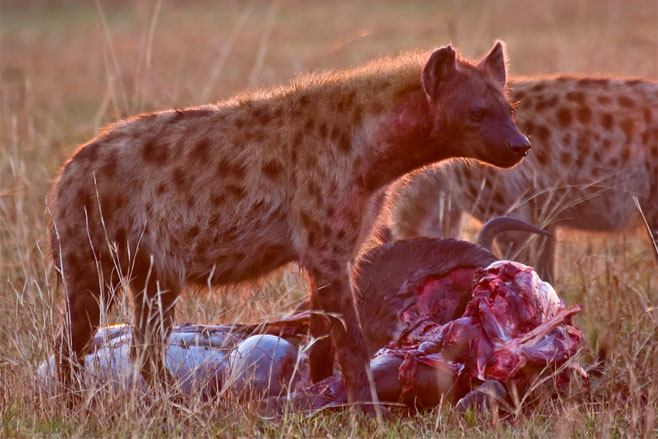 |
|
Spotted hyaena with a kill at sunrise, Masai Mara
National Reserve, Kenya. [photo
WildFocus
Images
©] |
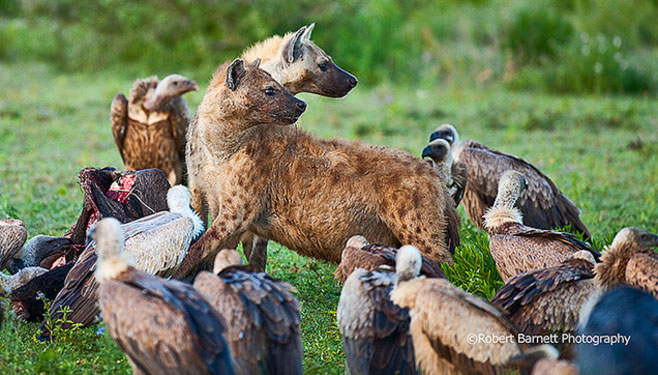 |
|
Spotted Hyaenas (Hyaena hyaena) keep a watchful
eye for both lions and other hyaenas at a fresh wildebeest kill.
Vultures also watch and wait their turns. [photo Robert Barnett Naso,
Robert
Barnett Photography
©] |
Distribution and habitat
Not found in the northern and eastern areas of
the southern African subregion. It generally prefers open savanna and woodland.
Reproduction
A litter of 1 -4 cubs is born in a burrow after
a gestation period of 110 days.
Usually only the matriarch will breed but if food is abundant then
occasionally a sub-ordinate female will breed as well. The clan
helps to raise the cubs and a guard will be left with the cubs when
the clan goes hunting. Meat is brought back for the cubs once they
are old enough and regurgitate by the adults.
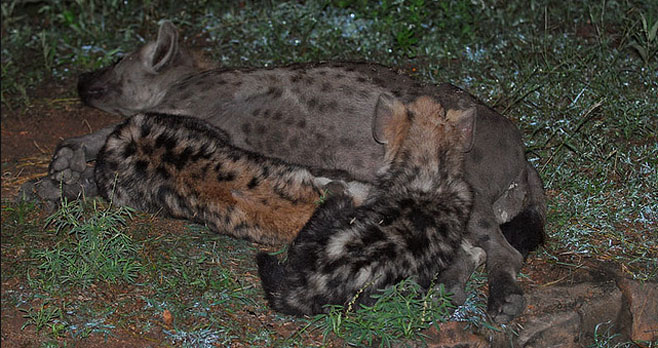 |
|
Spotted hyaena cubs with their mother, Kruger
National Park, South Africa. [photo
Callie de Wet ©] |
Conservation
The spotted hyaena’s natural enemy is the lion
who will try to kill them if they cross paths. The spotted hyaena is
likely to come into conflict with local people by killing livestock
so its conservation status is classified as conservation dependant.
Currently it is common in many of the larger national parks and
protected area in southern Africa.
|
